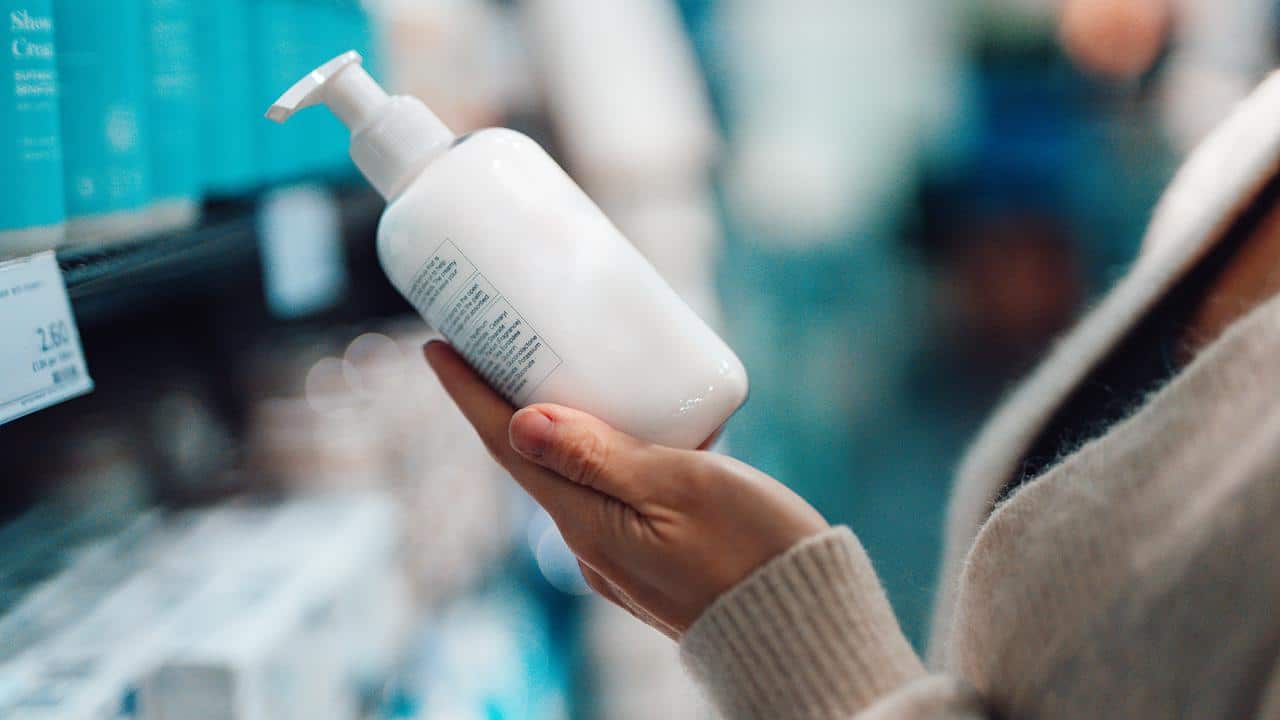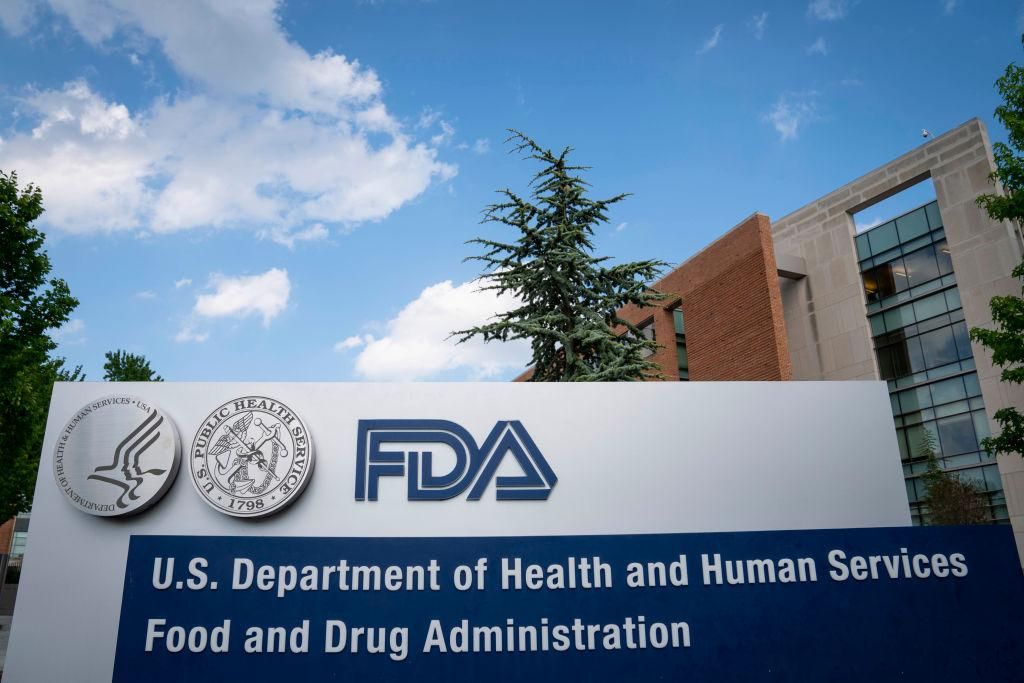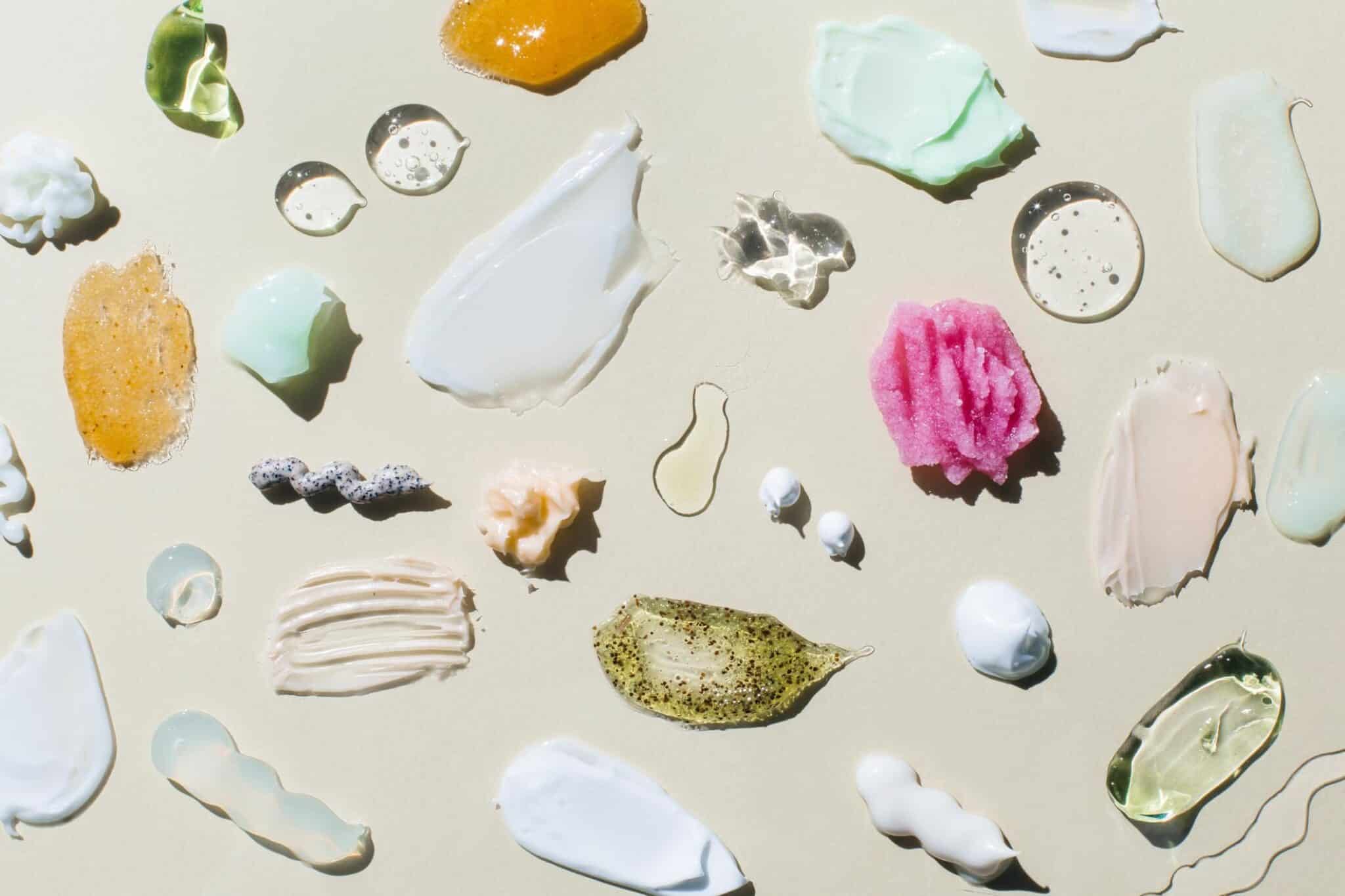
Personal Care Product Toxins 101: Everything You Need to Know
Includes tips for avoiding toxic beauty products.

Oscar Wong / Moment / Getty Images
Choosing beauty products is about more than finding what will work as promised — you also need to determine whether its ingredients list is one you’re comfortable with.
If you live in the United States, some experts predict that you are exposed to more than a hundred chemicals from personal care products before you even start the workday. While it’s easy to assume by their prevalence that these compounds are safe, a shocking amount are both untested and unregulated. Worse still, dozens of them have known negative effects yet are still in products you use every day.
Navigating the confusion of these cosmetic compounds is a daunting task. This guide should give you the tools necessary to better understand what’s really in the bottle so you can make informed choices with your personal care products.
How Toxic Are Personal Care Products?
We take it for granted that government regulations will keep poison out of products we use on our skin. In fact, however, cosmetics and personal care products have less oversight than almost any other consumer good.
Consider this: since 2009, close to 600 cosmetics manufacturers have reported the use of 88 chemicals that are linked to cancer, birth defects, and reproductive products. And these products aren’t rare — these chemicals are distributed throughout close to 73,000 distinct products.
Many believe these known toxins should be banned. But for today, they continue to be found in products meant to be used on the most sensitive parts of our bodies.
FDA Limitations for Personal Care Products
A sign for the Food And Drug Administration is seen outside of the headquarters on July 20, 2020 in White Oak, Maryland. Sarah Silbiger / Getty Images
Why is there such limited regulation over cosmetics in the United States? That comes down to understanding their history with the Food and Drug Administration (FDA).
Cosmetics are big business, but shockingly, this $170 billion industry is largely regulated under legislation established in 1938. Even today, just two pages of a 929-page act deal directly with cosmetics, crippling the FDA from regulating the chemicals within it.
This means that the cosmetics industry largely relies on self-regulation to keep things safe. As things stand today, companies don’t have to register with the FDA, provide them with ingredients statements, follow Good Manufacturing Practices, or provide access to product safety records. This limits the FDA’s power to order recalls, even when products pose risks of severe health consequences. Today, just 11 chemicals out of more than 10,000 found in cosmetics have been banned by the FDA.
Other countries aren’t as constrained with limited regulations. Many compounds prevalent in American products, such as formaldehyde, parabens, and many PFAS, are banned by the European Union and more than 40 other nations.
Health Effects of Toxins in Personal Care Products?
Toxic chemicals in cosmetics products have real impacts on personal health and the environment. Many are known or suspected carcinogens and linked to tumor formation. Other compounds contribute to neurological issues, endocrine disruption, and reproductive problems such as infertility, a higher risk of miscarriage, poor maternal and infant health outcomes, and developmental delays.
Most of these products only contain trace amounts of the problematic compounds. However, they are designed to be used frequently and are applied to the skin, a highly porous organ that offers direct access to your bloodstream and fatty tissues. In this way, even minute amounts of exposure can build up to dangerous levels over time.
What Chemicals Should You Avoid in Personal Care Products?
Here’s a closer look at some of the most insidious compounds in personal care products today.
Parabens
Parabens are used to prevent microbial growth in products like shampoo, conditioner, facial creams, and lotions. They are known endocrine disrupters that can be absorbed through the skin and into your blood and digestive system. There, parabens can mess with your hormones, cause reproductive health problems, and even contribute to cancer development. For this reason, pregnant women and young children are most vulnerable.
BHA and BHT
Both butylated hydroxyanisole (BHA) and butylated hydroxytoluene (BHT) are synthetic antioxidants used as preservatives in personal care products ranging from lipstick to makeup, sunscreen, deodorant, and many fragrances.
Some people experience allergic reactions when they touch their skin, and the International Agency for Research on Cancer classifies them as a possible carcinogen. Research with mice has found that long-term exposure to high doses causes kidney, liver, and thyroid problems while affecting lung function and even promoting tumor growth.
Worse, their presence is linked with organ toxicity and endocrine disruption. This has led the European Union to ban them in cosmetics, though they remain prevalent in the United States.
That’s bad news for wildlife, as the compounds can accumulate in water systems where they are toxic to aquatic organisms.
Coal Tar Dyes
As a derivative of burning coal, this complex mixture of hundreds of compounds is used in shampoos, scalp treatments, and hair dyes, as well as soaps and lotions. Research shows that coal tar and its derivatives are known carcinogens and can lead to skin tumors and neurological damage when applied topically. Compounding the problem, sometimes coal tar is contaminated with heavy metals toxic to the brain.
Preliminary research is inconclusive. One study found that women who used hair dyes had an increased risk of developing non-Hodgkin’s lymphoma, while others have found minimal association between the two.
The FDA requires all hair dye and skin products that contain coal tar to display a warning label on the packaging with precautions for its use. Even so, millions of consumers use these products unaware. That’s partly due to confusing labeling, as coal tar dyes are used extensively in cosmetics, where they are identified by five-digit Color Index (CI) numbers.
DEA-Related Ingredients
Diethanolamine (DEA) is widely used in cosmetics and household cleaning products to make them creamy or sudsy. It also acts as a pH adjuster to balance out acidity.
Some people experience moderate skin and eye irritation from DEA. Even more serious, the EU has banned it in personal care products due to concerns of the formation of nitrosamines, a probable carcinogen. On its own, DEA has been linked to liver tumors and cancers and tends to accumulate in water systems, posing problems to aquatic life within it.
Dibutyl Phthalate (DEP)
Primarily used as a dye solvent in nail products, dibutyl phthalate prevents polishes from becoming brittle. It’s also used in fragrances, where it doesn’t need to be disclosed by the manufacturer. Unfortunately for the end-user, this compound is an endocrine disruptor and can cause developmental problems for men like early puberty and other reproductive changes.
As DEP is absorbed through the skin, it increases the chances that other chemicals will trigger genetic mutations like reduced sperm count and changes in the testes and prostate.
Formaldehyde-Releasing Preservatives
Used as a preservative, formaldehyde and compounds that release it are common in shampoos, hair gel, body wash, nail polish, and even liquid baby soaps.
While these compounds prevent microbes from growing in moist environments, they can be absorbed through the skin where they trigger allergic reactions or worse. Products that contain formaldehyde can slowly off-gas the compound, making it a concern for indoor air quality. Some research links formaldehyde exposure to cancer. Worse, infants are one of the most vulnerable populations to formaldehyde.
Triclosan
This common antimicrobial agent is common in soap, detergents, toothpaste, and other personal care products. In fact, the Center for Disease Control and Prevention has found evidence of triclosan in the urine of more than three-quarters of people tested.
This compound has been linked to public health problems like endocrine disruption and an increase of antibiotic-resistant bacteria. It’s considered especially dangerous for pregnant women and breastfeeding mothers.
Less serious but still concerning, triclosan tends to be mildly irritating to skin and eyes after prolonged exposure. It also degrades slowly and builds up in the environment when flushed down the drain, where it can produce toxic effects for animals in water systems.
Parfum (Fragrance)
Many products like sunscreen, soap and shampoo, deodorant, and perfume include “fragrance” on the label, but rarely disclose what precisely is contained in their proprietary blends.
The FDA defines fragrance as a combination of chemicals that contribute to a product’s distinct scent. Over 3,000 chemicals are regularly used, and they can be made from a mix of petroleum or naturally derived ingredients, and most contain solvents, stabilizers, and other forms of preservatives.
Laboratory analysis shows that the average cologne or perfume contains around 14 chemicals not included on the label, many of which can trigger allergic reactions in some users.
This poses a problem for consumers, as many fragrance compounds have been linked to serious health problems like allergies, reproductive complications, and cancer development. Other problems associated with regular exposure include chronic migraines, asthma attacks, and gastrointestinal issues. Some evidence indicates that repeated exposure to perfume can contribute to the development of childhood asthma.
Note that even products marketed as “fragrance-free” or “unscented” might contain fragrance paired with a masking agent to prevent your brain from processing it.
PEG Compounds
PEGS (polyethylene glycols) are petroleum-based agents commonly used in cosmetics as thickeners, solvents, and moisture carriers. You’ll most often find them in cream-based products and laxatives.
Depending on how they’re manufactured, PEGS can be contaminated with known human carcinogens, including ethylene oxide and 1, 4-dioxane. Both don’t degrade quickly, meaning they can build up in your system and lead to toxicity problems.
Even when uncontaminated, PEG compounds can pose problems, especially when used on broken skin. The agent works as a “penetration enhancer,” meaning it improves the absorption of other products through the skin and into your bloodstream.
Petrolatum
More commonly known as petroleum jelly, petrolatum is added to personal care products as a moisturizer. It tends to melt at body temperature and forms a water-repellent layer on the skin, essentially locking in moisture.
Petrolatum is considered safe when refined properly, but that’s not always the reality. Often, the compound becomes contaminated with toxic compounds like polycyclic aromatic hydrocarbons (PAHs). That’s a big concern, as the National Toxicology Program classifies PAHs as reasonably anticipated carcinogens, especially in regards to breast cancer. While the EU mandates that manufacturers be transparent about the full refining process for PAH in petrolatum, there is no equivalent standard in the United States.
Siloxanes
Used to soften, smooth, and moisten hair and skin, siloxanes are also commonly found in commercial lubricants and make up water-repelling windshield coatings. Unfortunately, specific forms, such as cyclotetrasiloxane and cylcopentasiloxane, (also known as D4 and D5), are known to be toxic and can accumulate in your system after prolonged exposure. They are also harmful to aquatic life.
Lab testing has linked high doses of D5 to the development of uterine tumors and reproductive system harm. There’s also evidence that it can interfere with neurotransmitters in the nervous system.
Sodium Laureth Sulfate
This compound, commonly referred to as SLES, is a popular foaming agent in shampoos, facial cleansers, shower gels, and even dish soap. Many people find it irritates their skin and eyes after prolonged exposure.
Manufacturing processes are the biggest cause for concern, as sodium laureth sulfate is often contaminated with ethylene oxide and 1,4-dioxane, two compounds labeled by the International Agency for Research on Cancer as known and probable human carcinogens. As 1,4-dioxane doesn’t quickly degrade, this compound is considered an environmental toxin that disrupts water systems and can impact human development.
While both compounds can be removed from SLES through a vacuum stripping process, companies don’t need to disclose to consumers whether the source they use has gone through the process.
What Products Contain Toxins?
The list of cosmetic products that contain these compounds is convoluted and subject to change after frequent reformulations. As such, any attempt at listing them would become outdated even before publication.
However, certain product styles tend to be more toxin-laden than others. Research conducted by the University of Notre Dame found that cosmetics advertised as “waterproof,” “sweatproof,” or “long-wearing” tend to contain alarming levels of perfluoroalkyl and polyfluoroalkyl substances (PFAS).
Of the products tested, over 60 percent of foundations, 55 percent of lip products, and close to 50 percent of mascaras contained high levels of PFAS.
These findings have been collaborated by the Environmental Working Group through its Skin Deep Database. It shows that 13 different PFAS compounds have been found in over 300 products produced by more than 50 brands. Just eight percent disclosed their PFAS content on the ingredients list, and most that did were incomplete.
Legacy brands like Johnson & Johnson also aren’t immune to making products without problematic ingredients. According to a 2017 independent investigation, the company’s Just Shine Shimmer Powder (a cosmetic marketed to teens and tweens) contained high levels of lead and asbestos, a known human carcinogen. Further testing in 2019 found more signs of asbestos contamination in baby powder and products marketed to children, which were sold by brand names Claire’s and Justice. Despite clear evidence of concerning compounds, the FDA lacks the authority to recall these products.
How to Find Toxin-Free Personal Care Products
Tanja Ivanova / Moment / Getty Images
Thankfully, the tide is turning in regards to consumer awareness of chemical load in cosmetics. Personal care brands are taking notice and adjusting their formulas accordingly.
Many American cosmetics companies are feeling the pressure to improve their ingredients lists. Retailers such as Target, CVS, Rite Aid, Walgreens, Walmart, and mega-brands Procter & Gamble and Johnson & Johnson have gone public in recent years with promises to address the use of toxic compounds in personal care products. At the end of 2019, CVS prohibited formaldehyde, many parabens, diethylhexyl phthalate, and dibutyl phthalate from its shelves.
In contrast, many brands have long histories of keeping their ingredients lists simple and safe. The classic example is Dr. Bronner’s soap. Utilizing certified organic and fair-trade ingredients, this pure castile soap comes concentrated (meaning less plastic waste) and is free of synthetic preservatives, detergents, and foaming agents — making it safe for washing everything from the dishes to your face.
7 Tips for Avoiding Toxic Beauty Products
Finding personal care products free of toxins is far from easy. Not only is the industry guilty of greenwashing, but the lack of regulation within it means that dangerous compounds aren’t always disclosed on labels. With that in mind, here are some strategies for determining whether a product is worth the purchase:
- Look for certifications from the EU, as the products undergo stricter regulation than U.S. brands.
- Verify brands and ingredient safety through the EWG Skin Deep Cosmetics Database.
- Avoid products advertised as being long-lasting or waterproof, as they likely contain PFAS.
- Stay away from anything not labeled fragrance-free. “Unscented” is not the same, as this wording allows manufacturers to add masking agents to hide fragrances.
- Take shorter showers. The longer you spend under hot water, the more your pores will open, which increases the absorption rate of problematic compounds.
- Make DIY beauty products using clean, simple ingredients.
- Use personal care products that have a trusted organic certification.
Takeaway
Few things are more intimately connected to your well-being than products you apply to your skin. Failing to account for questionable ingredients may seem like a minor oversight in the moment, but consistent exposure to even trace amounts can lead to serious health and environmental problems.
Lack of regulation and even less product testing makes it almost impossible to accept a product’s claims at face value. To limit your exposure to problematic ingredients, you’ll need to rely on your own research and use the resources listed here to verify whether products are safe before using them.
Lydia Noyes is a freelance writer specializing in health and wellness, food and farming, and environmental topics. When not working against a writing deadline, you can find Lydia outdoors where she attempts to bring order to her 33-acre hobby farm filled with fruit trees, heritage breed pigs, too many chickens to count, and an organic garden that somehow gets bigger every year.
- Your Makeup Is Probably Toxic. The U.S. Senate Is Trying to Protect ...
- 10 Best Foods for Healthy Skin - EcoWatch
- How One Actress Found an Eco-Minded Community on TikTok ...
- 10 Simple Ways to Avoid Microplastics in Your Everyday Life ...
- Toxic 'Forever Chemicals' Found in Mainstream Cosmetics - EcoWatch

 233k
233k  41k
41k  Subscribe
Subscribe 

